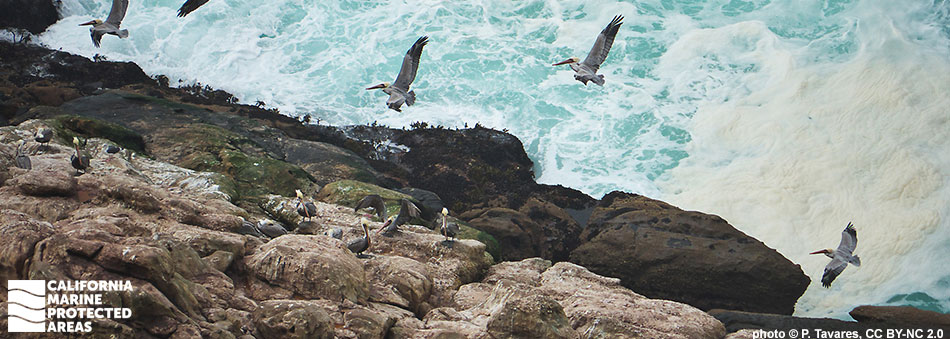
Overview
Point Resistance Rock Special Closure, north of Kelham Beach along Point Reyes National Seashore in Marin County, protects a large offshore rock important to breeding seabirds. Named for the nearby rocky coastal point, the special closure prohibits public access within 300 feet to protect breeding and nesting seabirds from disturbance. Located along a remote, sandy stretch of beach, this special closure helps to prevent Brandt's and pelagic cormorants, black oystercatchers, western gulls, common murres, pigeon guillemots, and brown pelicans from flushing and/or abandoning nests due to disturbances.
The special closure overlaps Point Reyes National Seashore. The large outcropping is surrounded by tidepools and a shallow intertidal zone, rich with sea stars, mussels, barnacles, owl limpets and small fish. Visitors of all ages can enjoy the numerous trails along the mainland coastal bluffs with endless ocean views and abundant wildlife sightings. Point Resistance Rock is easily seen from Kelham Beach, and migrating birds and marine mammals are frequent visitors to these waters.
Regulations
Boating and access are restricted. No person except employees of the California Department of Fish and Wildlife, United States Fish and Wildlife Service, National Park Service, or United States Coast Guard during performance of their official duties, or unless permission is granted by the California Department of Fish and Wildlife, shall enter the area.
California Code of Regulations Title 14, Section 632(b)(48)(opens in new tab)
Quick Facts
Special Closure size: 0.01 square miles
Depth range: 0 to 10 ft
*Habitat calculations are based on three-dimensional area and may exceed the total MPA area listed above.